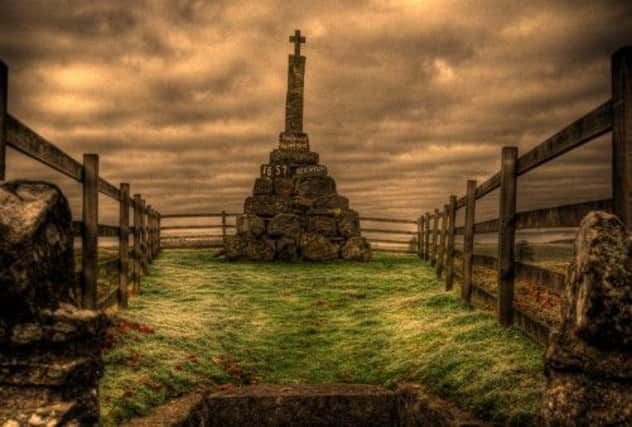Scots Monuments: Maggie Wall


There are words, white, painted, a message reaching back 344 years, when the Christian message was perverted by some men who would subsequently go to their murky graves with greater stains on their souls than the 4,000 Scotswomen they condemned.
The words read: “Maggie Wall ... burnt here … 1657 … as a witch.” The lettering is archaic. A century-old photograph of the 20ft-high monument, lying west of the village of Dunning in Perthshire, reveals the same legend. Strangely, the paint is fresh - and it will remain so. There is a posy of flowers nearby but they are withered. However, they, too, will be refreshed. A card will appear soon … it has always been so, in living memory.
Advertisement
Hide AdWho paints the inscription? Who brings the flowers? Who leaves the card? No-one knows or no-one is telling in a village of 1,000 people, where local woman Maggie fell foul of the suspicion, fear and witchcraft madness that Scotland embraced in both the 16th and 17th centuries.
The most enduring mystery is why the alleged witch, burnt at the stake, should be commemorated in such spectacular fashion. There is no other monument like it in Scotland.
Historians once believed that it was because she represented the last of the 4,000 “witches” to be executed, but years after Maggie’s death, another six women were killed in Dunning alone, a village that appears to have been infected with a virulent brand of devil fever. The most likely scenario is that the people responsible for her death repented of their folly, but whoever constructed such a monument had to be powerful, because ordinary folk would not have had the money or the nerve to oppose the establishment.
The Rollo family were the landowners. The laird at the time would certainly have been on the tribunal which condemned her.
Steve McGrail, a writer, who has investigated Maggie’s death, says: “Probably, it had more to do with politics than spells. Maggie lived in troubled times and had the bad luck to live in an area with a terrible reputation for persecuting witches.”
McGrail’s personal theory is that the Church and the laird felt a little remorseful and thus the only monument to a single alleged witch in Scotland was built. However, it does not explain the modern connection.
Advertisement
Hide AdMcGrail adds: “Somebody still seems to think the Church has blood on its hands for a wreath is regularly left with a card at the cairn. However, who performs this surreptitious ceremony is another mystery, as is the painting of the inscription, which itself goes back a long way. A photograph taken 100 years ago shows the lettering already there.
So why should her death matter? Well, far more visitors go to Maggie’s stone than the 12th-century St Serf’s church nearby. Perhaps many of them simply wonder anew at the depths of human cruelty. Whatever they think, Maggie’s memorial keeps its secrets intact.”